The candles are lit, the confetti is strewn, and as the choir hums one more verse of “Happy Birthday,” we pause to mark ten years of In Trust. In one short decade, the magazine has gone from a gleam in the eyes of its creators, most notably the late J. R. Zwingle, father of the Association of Governing Boards of Universities and Colleges, to its present position as a much-appreciated resource for leaders in theological education. Over the past decade, the editorial staff have traveled coast to coast and across national borders, visiting seminaries both large and small in search of stories that will inform and enthuse the work of theological school trustees. From the beginning, In Trust has sought the middle ground, espousing no one theological, denominational, or educational viewpoint, choosing instead to celebrate and draw upon the rich diversity of seminaries in the United States and Canada.
To the considerable delight of all involved, the approach has worked. The support which the magazine enjoys is most clearly evidenced by In Trust’s Patrons, 149 theological schools of all traditions that have committed themselves to contribute $250 a year toward the magazine’s operating expenses. Roman Catholic, Eastern Orthodox, mainstream Protestant and Anglican, Evangelical, and Unitarian Universalist—In Trust manages to speak to all. In so doing, the magazine has become a forum where today’s friends of theological education gather to compare notes and exchange ideas.
A Guide for Accidental Theologians
 |
J. L. Zwingle (c.1960)
Inspirer |
From its earliest years, the magazine has had a special sympathy for the laymen and women who answer the call to service on a seminary board and has sought to address directly the needs of these “accidental theologians.” The magazine recognizes that lay trustees, no matter how successful in their professional lives, can be uncomfortable making decisions in the company of clergy and about the work of professional theologians. It’s not easy for trustees to check their churchly behavior and assumptions at the boardroom door. For this reason, In Trust is committed to bringing to its readers as full a discussion as it can of the data and developments shaping contemporary theological education, higher education in general, and the church at large. In his 1989 inaugural column, William R. MacKaye, the editor of In Trust, referred to the new publication as a “map book” for trustees who were expected to chart the future courses of the institutions for which they were responsible. And so it has become.
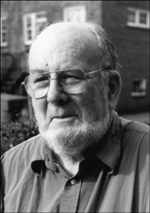 |
| William R. MacKaye, Editor |
Over these past ten years, the magazine has provided a wider context within which to understand seminary education, situating theological schools in relationship to emerging societal and ecclesiastical trends. Within the pages of In Trust the editors and other writers have charted the course of change, adaptation, and new direction for seminaries in North America, and in so doing, have provided a valuable resource for those who would study the phenomenon of theological education. In Trust also serves as a window on God at work through the dedicated efforts of the men and women—trustees, administrators, and faculty—who make up these places known as theological schools.
In Our Beginning ...
... there were words, but for the most part, they were someone else’s—and that was by design. Originally described as “an occasional paper for friends of theological education,” the magazine sought out and reprinted articles that dealt with the bigger picture of which seminaries were a part. The thought was that as few trustees have time to find these resources on their own, In Trust would do the searching and bring the best of current wisdom together in a single publication.
Even in those early years, however, the editor was visible and vocal, as were members of the editorial council, providing the occasional article or conversation piece on trusteeship. That visibility increased considerably when, three years into the life of the magazine, a third generous grant from the Lilly Endowment (whose vice president, Robert Wood Lynn, and program consultant, Christa R. Klein, both played instrumental founding roles) enabled significant enhancement of the publication and expansion of the mailing list. A readership survey done at the time showed that presidents and trustees wanted more comparative material from other schools, more news and information about trends affecting theological education and, most of all, more identifiable trustee voices in the pages of the magazine. In Trust determined to give the readers what they wanted. The “new and improved” magazine bowed in with the Autumn 1992 issue, which provided an exciting preview of good things to come. There was no doubt about it. In Trust had found its voice. 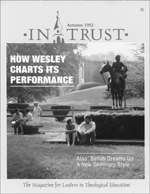
There have been few topics related to institutional life deemed unworthy of attention in the pages of In Trust. From institutional food services (complete with a favorite recipe), to the theological implications of campus architecture, to the wisdom of “unexpected sages,” the magazine has taken a comprehensive approach in its coverage. For all the diversity of topics, however, five themes have dominated the pages of In Trust. Seminary leaders have spoken, and in response, In Trust has given considerable attention to:
- the challenge of student recruitment;
- changing modes and methods of seminary education;
- institutional finances;
- campus governance and the role of faculty and other stakeholders; and,
- board development and trustee education.
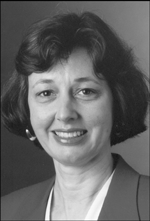 |
| Christa R. Klein, Godmother |
A Good Student Is Hard To Find
The most obvious and immediately pressing issue confronting leaders of theological education is student recruitment. This was true when In Trust first appeared in 1989 and it remains so today. A downturn in enrollment of even five to ten students can send a seminary into a financial tailspin. And years of steady decline in numbers of students, especially in M.Div. programs, have caused many a denomination to question the value of its seminary/ies to the future vitality of a specific faith tradition. It’s little wonder that discussions about student recruitment dominate board meetings, and in turn, have helped fill the pages of In Trust.
Over the years, the magazine has reported on the second-career seminarian, the older student, the less prepared student, and in Spring 1998, the cyber-student. In Trust has searched out advice on how seminaries can recruit more effectively, and provided examples of what some theological schools have done to help the best-qualified candidates from their constituent churches hear and answer their call to ministry. Time after time, In Trust has returned to the question of the role of congregations in calling out future seminarians, and how theological schools can encourage more of this to happen. The magazine has challenged trustees to consider the seminary’s relationship to and role with denominations and congregations, and along that line, the need to give attention to the kind of church that today’s seminarians are likely to find themselves serving after graduation.
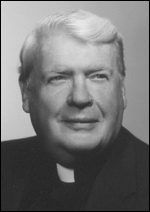 |
| Vincent deP. Cushing, O.F.M., Host |
In Trust also has provided trustees with comparative data on student profiles and recruiting patterns as well as cost per recruited student. The magazine has highlighted programs aimed at introducing high-schoolers to theological education and to outreach activities for college students. While no one sure-fire approach has emerged from the host of articles on the topic of student recruitment, trustees have been made aware of efforts that have succeeded in one setting and may be worth a try by other seminaries.
A Seminary in Any Other Place
A striking development in the world of theological education over the past decade or two is the rise of off-site delivery of theological education, and there is every indication that the movement is picking up steam even as seminary boards struggle to figure out what the trend means for a specific institution. In Trust first addressed this issue in 1991 in an article titled “A School in Three Places,” and the magazine has returned to the theme with fourteen subsequent articles, the most recent appearing in the Spring 1998 issue.
In Trust has sought to illustrate that the challenge of technology and distance learning is not just one of money—how will seminaries pay, for example, for the expensive hardware and personnel that the times demand? The challenge is also one of control. In the past, it was largely up to the faculty to determine what and how to teach. Now the heat is on, as the ever-increasing sophistication of distance learning and other technological novelties enhance the ability of students to choose what and how to learn. The magazine has encouraged trustees to think about satellite campuses, distance learning, and the use of technology in terms of what these mean for faculty appointments, for use of the historic campus, for spiritual formation of students, and for long-honored commitments to community and the importance of shared experiences.
If anything is to be learned by looking back at the stream of articles on these topics, it is that seminary communities dare not take a head-in-the-sand approach to technology and the opportunities and challenges of distance learning. Old things may not have completely passed away, but it is certain that higher education, including theological education, has entered a new day. Perhaps the best contribution a board can make on this point is to ask the right questions, to challenge appropriately proposed changes in the historic delivery system, and to engage faculty in conversation about educational goals and desired learning outcomes. In Trust has tried to point trustees to some of the “right” questions on this issue, and to arm them with the information needed to judge adequately the merit of answers that come back to them.
The Money Game
Vincent Cushing, president of Washington Theological Union (host for In Trust's first office) and a founding member of In Trust, once remarked that “after the New Testament, it’s all budget.” And so it seems to many leaders in theological education. As traditional sources of support, including denominational subsidies for church-related seminaries and provincial support for Canadian institutions, dry up, few theological schools are exempt from worries about money. Throw in the impact of fewer students, the challenge and cost of new technology, and heightened expectations of today’s faculty that they should earn a living wage, and it’s clearly evident that seminary budgeting “ain’t what it used to be.” The titles of back-to-back articles in the Summer 1994 issue of the magazine— “Why the Job Is So Tough: The Presidency” and “The Costs of Money Woes: Two Presidents Done In”—illustrate the impact of finances on administrative well-being as well as institutional viability. It was no surprise, then, when 37 percent of respondents to a recent readership survey rated issues of financial management and development as their board’s chief concern, by far the most frequently mentioned items. The findings help explain why In Trust has addressed these topics in at least three out of every four issues of the magazine. In dealing with the subject of money, In Trust has sought a well-rounded approach, focusing on fund-raising, institutional budgeting, and investment policies. Trustee readers have been alerted to sources of comparative data for judging institutional performance on all three of these fronts. Among the most commented upon articles on institutional finance was a Summer 1993 piece that used the metaphor of a dashboard for helping trustees think about making sense of all the numbers that seminaries churn out each year. Another popular article was a real-life case study titled “How Wesley Counts” (Autumn 1992), which provided an up-close and candid look at one seminary’s financial situation. The popularity of these approaches to an often difficult subject has encouraged In Trust to seek out other such articles, and to link trustee education to actual situations.
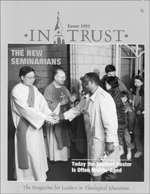 |
Making Room for the Others
Although the target audience of In Trust is governing boards and senior-administrators in theological schools, the editorial team is aware that seminary communities include many stakeholders, all of whom expect to have a voice in decision-making. Over the years, In Trust has invited presidents, trustees and denominational leaders to share their best wisdom on how to bring order to what many board members feel is a messy, time-consuming and often frustrating way of doing business. The magazine has highlighted collaborative programs that have won the cooperation of multiple institutions and brought together seemingly odd theological bedfellows. In Trust also has drawn from the scholarship of organizational management, reprinting the good advice of the likes of Peter Drucker and Max DePree.
From the wider cast of characters that are a seminary constituency, the magazine has singled out the faculty for special attention. One of the uniquenesses of theological education is that, in a majority of cases, the number of board members is two to three times that of the full-time teaching faculty. And yet the time-honored conventions of institutional governance give the teaching staff a measure of power and voice that can be confusing to trustees not familiar with the facts of academic life. However, as the Summer 1996 article “Learning to Work Together” suggested, “When governing boards and faculties collaborate, their work is more than the sum of two parts.” Through a whole host of stories, In Trust has worked to demystify faculty hiring, tenure, and promotion, and by so doing, help boards and faculty speak each other’s language.
Addressing Board Performance
It is safe to say that every article, column, book review, and even cartoon that has appeared within the pages of In Trust was selected for its educational value to theological school trustees. Indeed, a tag line for the magazine might well read “Board Education R Us.” However, the editorial staff recognize that, in addition to making trustees aware of the big issues and themes confronting theological education today, boards must be encouraged to give attention to their own performance and development. The magazine is firmly committed to the notion that a theological school’s governing board can and should participate directly in building the quality as well as the fiscal stability of the institution it serves, but only after a board has given attention to its own effectiveness. This commitment by In Trust shows itself in the numerous articles that have appeared over the years highlighting how, why, and when a board can work to improve its performance.
In Trust readers have had opportunity to listen in on conversations among seasoned trustees, between board chairs and presidents, and with “experts” on trustee board development. The magazine has highlighted research on effective trusteeship and introduced readers to important new books and other resources that might be used in designing a board development program. There have been articles on board orientation, board retreats, working with denominationally appointed trustees, and making committees work better for the institution. The magazine has addressed the issue of “Defining Your Programs” through attention to institutional mission (Spring 1989), “Bringing the Outsiders In” by focusing on board process (Summer 1994), and “Making Sure You Have a Good Road Map” before starting to plan (Spring 1996).
The value to trustees of articles such as these should be obvious, but why should presidents care about the condition of the board? To this question, In Trust has a ready and much-repeated response. Working closely with a good board makes a good leader better. Believing that one good turn deserves another, along with encouraging presidents to make board development a high priority, In Trust has urged boards to take good care of their presidents. A theme running through ten years’ issues of the magazine is that the CEO-board relationship is far too important for either side to take lightly.
A Future View
As In Trust looks ahead to a new decade of service to theological education in North America, it is likely that the themes that dominated the pages of the magazine during the first ten years will continue to occupy top billing. But it is just as likely that new issues will crop up within the seminary world. Thanks to the magazine’s ever-expanding network of friends in the right places, In Trust is ready to respond to and report on late-breaking developments for theological education, and to do so in ways that take into account what it is that trustees need to know. One thing that will not change, however, is the magazine’s attention to the all important question for boards and seminary presidents, and that is “What does faith have to do with it?” 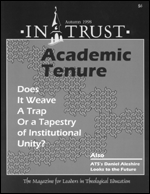
Along with continued commitment to excellence in magazine publication, In Trust is branching out into new fields of service. A first step in this direction was a series of Good Faith Governance Seminars held over the past two years and continuing through fall 1999. To date, trustee-president teams from thirty-two seminaries have signed on for these events and, at the encouragement of participant schools, there is talk of continuing the seminars beyond the current series. In the months ahead, In Trust will introduce a line of board education “toolkits,” drawn in part from the pages of back issues of In Trust and augmented by new material provided by leading experts on trusteeship and theological education. And like their seminary counterparts, In Trust’s board is exploring how to make better use of technology as a means of encouraging communication among the leaders of theological education in North America.
The candles have been snuffed, the confetti swept away, and the choir has gone home. Enough of looking back. It’s time to return to work. A new decade awaits In Trust.